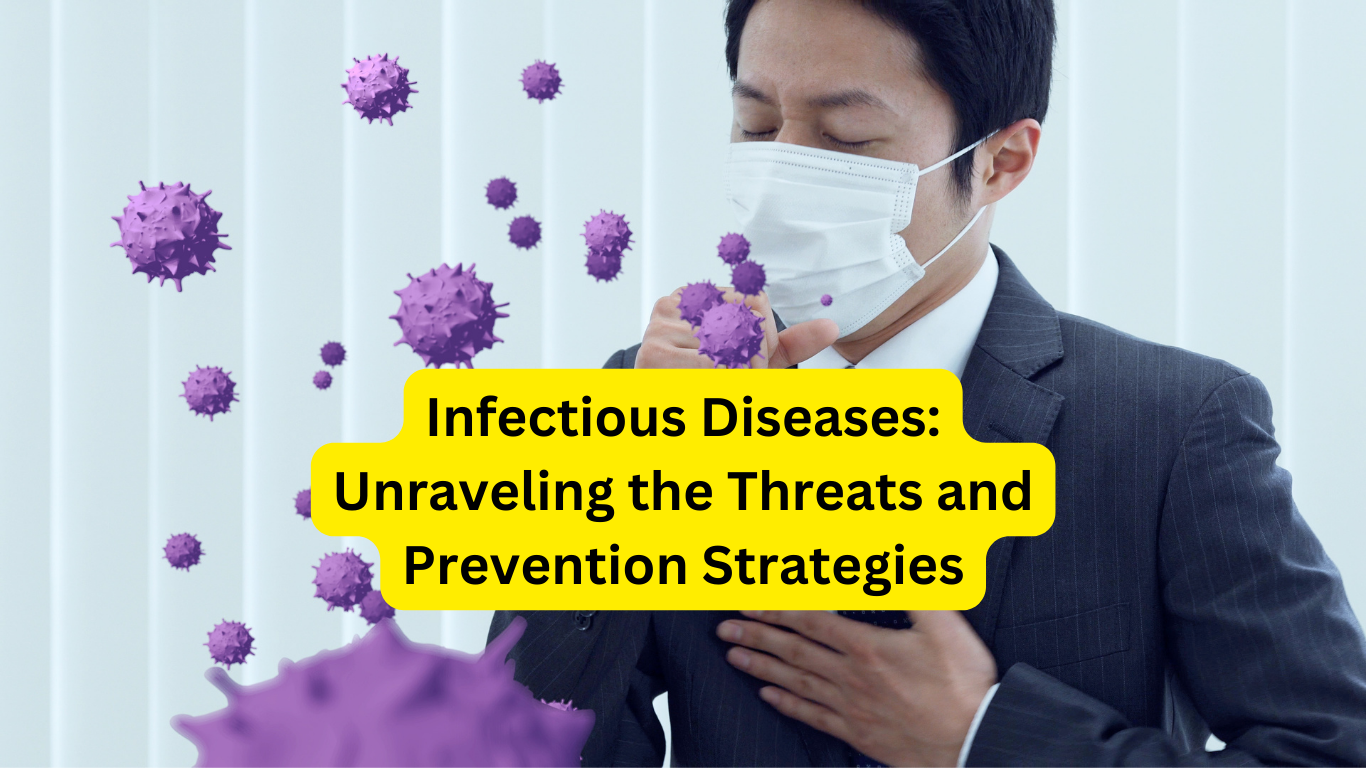Introduction
Infectious diseases have been a constant threat to humanity throughout history. These illnesses, caused by pathogens such as bacteria, viruses, fungi, and parasites, can spread rapidly and have the potential to cause widespread outbreaks. In this comprehensive article, we delve into the world of infectious diseases, exploring their impact on global health and highlighting effective prevention strategies.
Understanding Infectious Diseases
Infectious diseases are illnesses caused by harmful microorganisms that invade the body, leading to infection. These microscopic invaders can multiply and spread from person to person, animals to humans, or through contaminated food, water, and vectors like mosquitoes and ticks.
Types of Infectious Diseases
There is a wide array of infectious diseases, each with its unique characteristics and modes of transmission. Some common types include:
1. Respiratory Infections
Respiratory infections affect the lungs and airways, leading to conditions like influenza, pneumonia, tuberculosis, and COVID-19.
2. Gastrointestinal Infections
Gastrointestinal infections primarily affect the digestive system, causing diseases such as cholera, norovirus, and hepatitis A.
3. Vector-Borne Diseases
Vector-borne diseases are transmitted through insect or animal vectors, including malaria (mosquitoes), Lyme disease (ticks), and dengue fever (mosquitoes).
4. Sexually Transmitted Infections (STIs)
Sexually transmitted infections, as the name suggests, are transmitted through sexual contact and include HIV/AIDS, gonorrhea, and syphilis.
5. Zoonotic Diseases
Zoonotic diseases are infections that can be transmitted from animals to humans, such as rabies, Ebola, and avian influenza.
The Global Impact of Infectious Diseases
Keyword: Global Impact of Infectious Diseases
Infectious diseases have far-reaching consequences on a global scale:
1. Public Health Burden
Infectious diseases pose a significant burden on public health systems worldwide. Outbreaks can overwhelm healthcare facilities, leading to shortages of medical supplies and personnel.
2. Economic Impact
The economic toll of infectious diseases is substantial. Outbreaks disrupt trade, travel, and commerce, causing financial losses to individuals, businesses, and governments.
3. Social Disruption
Outbreaks often lead to fear and panic in communities, impacting daily life and social interactions. Quarantine measures and travel restrictions can create social isolation and emotional distress.
4. Loss of Life
Infectious diseases have claimed millions of lives throughout history. Epidemics and pandemics can result in devastating death tolls, leaving families and communities devastated.
Prevention and Control Measures
To combat the threats posed by infectious diseases, a multifaceted approach to prevention and control is essential:
1. Vaccination Programs
Vaccination plays a critical role in preventing the spread of infectious diseases. Immunizing individuals against specific pathogens helps build immunity and reduces the risk of outbreaks.
2. Hygiene Practices
Practicing good hygiene, such as frequent handwashing, proper food handling, and maintaining clean living spaces, can prevent the transmission of many infectious diseases.
3. Disease Surveillance
Efficient disease surveillance systems help in early detection and containment of outbreaks. Monitoring the spread of infections allows for swift response and control measures.
4. Education and Awareness
Public education and awareness campaigns are crucial in informing communities about infectious diseases, their symptoms, and prevention methods.
The Future of Infectious Disease Management
As technology and medical advancements continue to progress, so does our ability to manage infectious diseases:
1. Antimicrobial Resistance
The emergence of antimicrobial resistance poses a significant challenge to infectious disease management. Ongoing research and responsible antibiotic use are essential to combat this threat.
2. Pandemic Preparedness
The lessons learned from recent pandemics, such as COVID-19, highlight the importance of global pandemic preparedness and coordination.
3. One Health Approach
The One Health approach emphasizes the interconnectedness of human, animal, and environmental health, recognizing that infectious diseases can originate from any of these spheres.
Conclusion
Infectious diseases remain a formidable threat to global health and well-being. Understanding their modes of transmission, impact, and prevention strategies is crucial in combating their spread. By promoting vaccination, hygiene practices, disease surveillance, education, and investing in research, we can work towards a healthier, safer world.

[…] factors. Healthcare providers can leverage this information to design targeted interventions and preventive strategies. AI-powered population health management initiatives have the potential to reduce disease burden […]
[…] One of the most significant beneficiaries of AI funding is the healthcare and life sciences sector. AI’s ability to analyze vast amounts of medical data, identify patterns, and assist in diagnosis has the potential to revolutionize patient care, drug discovery, and disease prevention. […]
[…] solutions. AI startups like CyberShield employ machine learning algorithms to detect and prevent sophisticated cyber threats, safeguarding sensitive data and digital […]